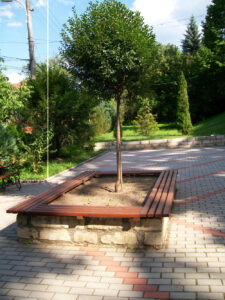The Cluj-Napoca Botanical Garden
The Cluj-Napoca Botanical Garden is a scientific, didactic and educational institution and it is subordinate to the Babes-Bolyai University. In 1920 professor Alexandru Borza has founded this prestigious institution. On a surface of 14 hectares perfect for growing and developing plants, one can find here over 10 000 beautiful species from different continents.
The Cluj-Napoca Botanical Garden is divided into several sections such as ornamental, phytogeographic, systematic, economic and medicinal.
Depending on season, the ornamental section houses numerous species and varieties of plants which are design exclusively for decorative purpose.
Every spring you can find here over 120 species of tulips, hyacinths, crocus and daffodils. In summer, the ornamental sector houses about 350 varieties of roses and a lot of other garden flowers species that are known and cultivated all over the world for decorative purpose.
So you will find here over 200 species of Tagetes, Zinnia, Callistephus, Petunia, Dahlia, Canna, Gladiolus, Ocimum, Verbena, Ipomoea and many many others.
In the phytogeographic section one can admire the gyo-no-niwa Japanese garden that includes specific landscape elements and which is representative for the Eastern culture.
The flora from our country is also very well represented for all its geographical regions: the plains and the Transylvanian plateau, the Banat Carpathians vegetation, Moldova and Oltenia regions, the Black Sea.
The Roman garden is a special and spectacular attraction. It is also known as Pliny’s garden and it is dominated by a statue of the goddess Ceres, framed by two genuine coffins discovered in the old Roman city of Napoca.
Here you can find a lot of plants that were cultivated in Roman cities and in the peasant gardens from Roman Dacia, whose scientific names can be found in the popular names of some plants that grow here.
The systematic section is one of the most important places of the garden covering an area of 4 hectares and comprising the most important plant families.
The garden has also two greenhouses where you can find a lot of equatorial, tropical and subtropical plants. These special plants are very important for different research activities.
The large greenhouse complex consists of six sections:
- aquatic plants greenhouse,
- palm trees greenhouse,
- Mediterranean and Australian vegetation greenhouse,
- a greenhouse with succulents plants,
- bromaliacee greenhouse,
- ferns and orchids greenhouse.
Further, the economic sector houses several plants according to their use: food plants, technical, fodder, melliferous and tinctorial.
Finally, Cluj Botanical Garden also holds a sector dedicated for medicinal plants. Here you can find traditional healing plants used by the Romanian people and the Romanian Pharmacopoeia.
One can also choose to visit two more areas of interest: the Herbarium and the Botanical Museum Herbarium.
Price:
Adults: 8 lei.
Children over 5 years, students, pensioners and groups of more than 10 persons – 4 lei.
Students and employees of “Babes – Bolyai” University (based on student card and identity employment cards) – free
Hours:
Garden:
Daily from January to December – 8:00 to 8:00 p.m.
Greenhouses:
from September to March – 8:00 to 4:00 p.m.
April-May – 9 a.m. to 5 p.m.
June to August – 10:00 a.m. to 6:00 p.m.
Museum :
Monday – Friday – 7:00 to 3:00 p.m.
Saturday, Sunday – closed
Adress: 42 Republic Street, Cluj Napoca












